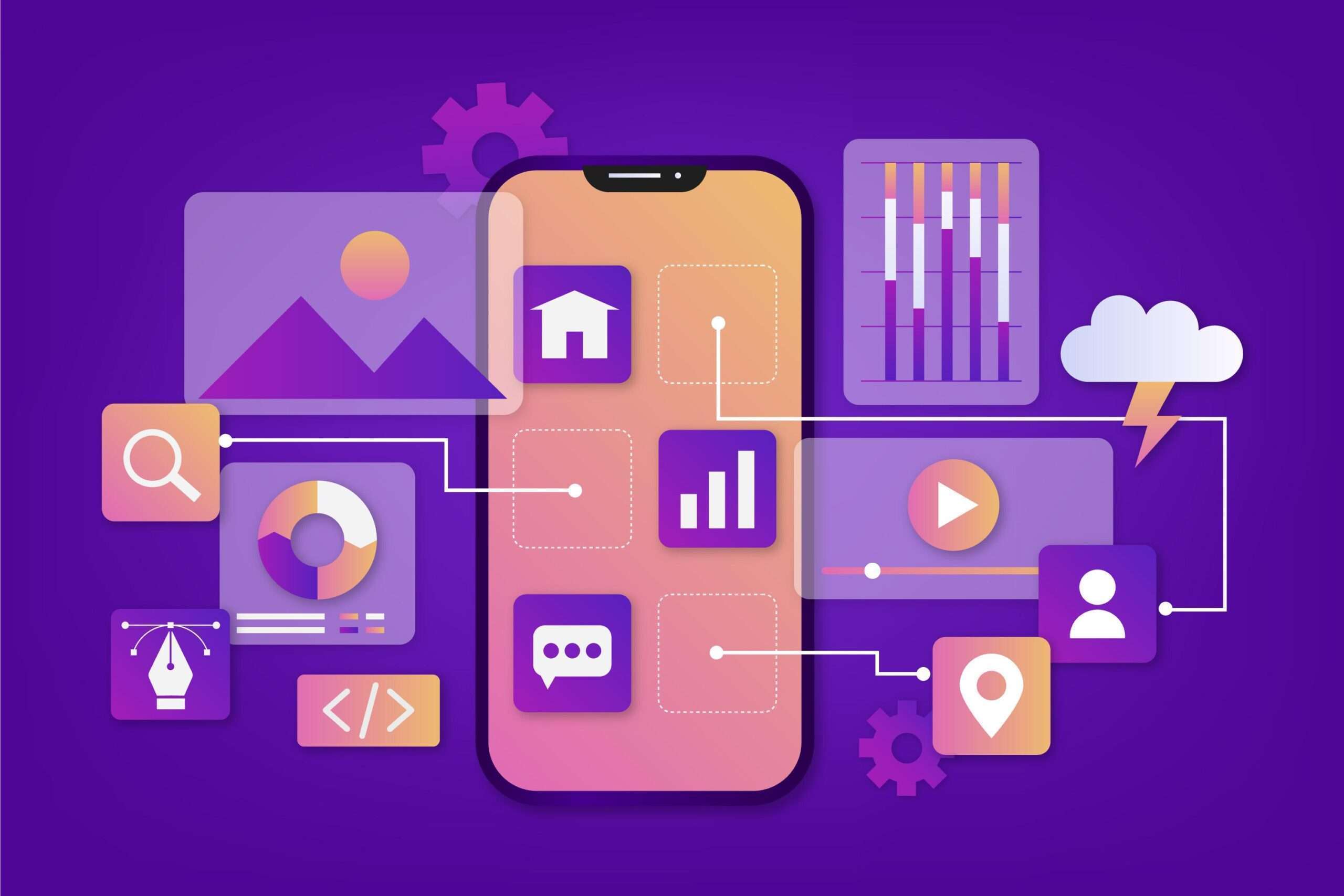Introduction
In today’s fast-paced digital landscape, where websites serve as a cornerstone of every business and brand, user experience (UX) has emerged as a game-changer. The days when flashy designs were enough to capture attention are long gone. Now, it’s all about how intuitive, engaging, and user-friendly your website is. Wondering why it matters so much? Let’s face it—users won’t stick around if they find your site confusing or sluggish. A poor UX can turn potential customers away in seconds, while a seamless one keeps them coming back for more.
So, what makes user experience such a critical factor in web development, and how can you elevate it? In this article, we’ll dive deep into the concept of UX, break down its core components, and uncover actionable tips to make your website stand out.
Understanding User Experience (UX) in Web Development
What is User Experience (UX)?
User experience, or UX, refers to how users interact with and perceive a product or service—in this case, a website. It encompasses everything from ease of navigation to how aesthetically pleasing the design is. UX is not just about making a website look good; it’s about ensuring that every interaction is intuitive, satisfying, and purposeful.
You’ve likely heard of UI (user interface) and UX used interchangeably, but they’re not the same. UI focuses on the design and layout of a site—think buttons, color schemes, and fonts—while UX is about how those elements work together to create a seamless journey for the user.
The Role of UX in Modern Websites
Why does UX matter so much today? It’s simple: users demand it. Websites with poor UX often suffer from high bounce rates and low conversions. On the other hand, a website that prioritizes usability and accessibility fosters trust, encourages repeat visits, and builds credibility over time. In short, investing in UX is like laying a strong foundation for your brand’s online presence.
Key Components of an Effective User Experience
Visual Design and Aesthetics
Let’s be real: first impressions count. Your website’s visual appeal is the first thing users notice. If your site looks outdated or cluttered, chances are users will leave before even exploring further. But aesthetics go beyond choosing a nice color scheme or trendy font. It’s about aligning your design with your brand’s identity and purpose.
For instance, using bold colors and sleek typography can convey a modern, innovative vibe, while pastel tones and serif fonts might create a sense of elegance and calmness.
Site Navigation and Structure
Have you ever visited a website and struggled to find what you were looking for? Frustrating, right? That’s why navigation is a cornerstone of UX. An intuitive menu, logical page hierarchy, and well-placed call-to-action buttons can make all the difference.
Mobile Responsiveness
With more than half of internet traffic coming from mobile devices, ensuring that your website works flawlessly across different screen sizes is non-negotiable. A mobile-friendly site not only enhances user satisfaction but also boosts your search engine rankings.
Website Speed and Performance
Nobody likes a slow-loading website. In fact, even a one-second delay can reduce conversions by up to 7%. Optimizing your site’s speed through image compression, caching, and efficient coding is crucial for keeping users engaged.
Benefits of Prioritizing User Experience
Increased User Engagement
A well-thought-out user experience is like a magnet—it keeps users hooked. When visitors find your website easy to navigate and visually appealing, they’re more likely to explore further. Think about interactive elements like videos, engaging content, or even gamified experiences. These features not only entertain but also create a deeper connection between users and your brand.
For example, a blog with internal links and a “Recommended Reads” section can encourage users to stay longer and consume more content. Similarly, an e-commerce site with an intuitive product search and personalized suggestions keeps shoppers engaged. The longer they stay, the more likely they are to convert.
Improved Conversion Rates
Have you ever abandoned a website just because it was too complicated or took forever to load? You’re not alone. A seamless UX is directly linked to higher conversion rates. Whether it’s signing up for a newsletter, downloading an app, or making a purchase, a smooth journey encourages users to take action.
Consider companies like Amazon. Their focus on UX—simple navigation, clear pricing, and one-click purchasing—has turned them into a conversion powerhouse. By removing barriers like confusing forms or unnecessary steps, you can replicate this success on your website.
Higher Search Engine Rankings
Here’s a fact: search engines, especially Google, love websites with great user experiences. Core Web Vitals, a set of metrics introduced by Google, focus on speed, responsiveness, and visual stability. Websites that excel in these areas often rank higher in search engine results.
So, investing in UX isn’t just about satisfying your visitors—it’s also about improving your visibility online. A faster, more user-friendly website means happier users, which translates to better SEO performance.
Common UX Mistakes to Avoid
Overloading with Features
Sometimes, less is more. Websites that try to cram in too many features—pop-ups, auto-playing videos, or excessive widgets—can overwhelm users. Instead of impressing them, you might end up driving them away.
Focus on providing value with simplicity. Stick to features that align with your users’ needs and remove anything that doesn’t add to the overall experience.
Ignoring User Feedback
Your users are your best critics. If they’re complaining about slow pages, broken links, or confusing layouts, it’s time to listen. Ignoring their feedback not only hurts your website’s usability but also damages your brand’s reputation.
Use tools like online surveys or feedback forms to gather insights. Platforms like Hotjar or Google Analytics can also give you a clear picture of user behavior, helping you identify areas for improvement.
Inconsistent Design
Imagine visiting a website where the homepage looks sleek and modern, but the product pages feel outdated and clunky. Such inconsistencies can create confusion and hurt user trust. Maintaining a consistent design across all pages—fonts, colors, and overall style—is key to a cohesive brand identity.
Tools and Technologies to Enhance UX
Wireframing and Prototyping Tools
Before building a website, it’s essential to create a blueprint. Tools like Figma, Sketch, or Adobe XD allow you to design prototypes that simulate the user journey. These tools help you spot potential flaws and refine the experience before the actual development begins.
Analytics and Testing Tools
Want to know what’s working and what’s not? Analytics tools like Google Analytics can track user behavior, showing you which pages perform well and which ones need improvement. Heatmapping tools like Hotjar can visually display where users click, scroll, or drop off.
A/B testing tools, like Optimizely or VWO, can further help you experiment with different layouts or features to see what resonates most with your audience.
AI and Personalization Technologies
Artificial intelligence is revolutionizing user experience. From chatbots that provide instant support to recommendation systems that tailor suggestions based on user preferences, AI can significantly enhance personalization.
For example, platforms like Netflix or Spotify use AI algorithms to recommend content, creating a highly personalized and engaging user experience. Implementing similar AI-driven features can set your website apart.
Steps to Build a User-Centric Website
Conducting User Research
A user-centric website starts with understanding your audience. What are their needs, preferences, and pain points? Tools like surveys, focus groups, and interviews can provide valuable insights. Additionally, studying competitor websites can reveal what works and what doesn’t.
By putting yourself in the user’s shoes, you can design a website that truly resonates with your audience.
Designing for Accessibility
Accessibility isn’t just a nice-to-have—it’s a must. Incorporating features like screen reader compatibility, alt text for images, and keyboard navigation ensures your website is usable by everyone, including those with disabilities.
Following WCAG (Web Content Accessibility Guidelines) can help you create an inclusive experience, which is also a requirement in some regions to avoid legal issues.
Continuous Testing and Optimization
Your website is never truly “finished.” Regular testing and optimization are essential for maintaining a great user experience. Conduct usability tests, gather user feedback, and monitor website metrics to identify any weak points.
Iterative improvements, even if small, can make a big difference over time.
The Future of User Experience in Web Development
Emerging Trends in UX
The future of UX is filled with exciting possibilities. Voice-activated interfaces are becoming more common, with devices like Alexa and Siri paving the way. Augmented reality (AR) and virtual reality (VR) are also entering the mainstream, creating immersive user experiences.
For example, AR can allow users to visualize products in their homes before purchasing, while VR can transport them to entirely new environments.
Sustainability in UX Design
As the world focuses more on sustainability, web developers are looking for ways to create eco-friendly websites. This includes minimizing energy consumption, optimizing code for efficiency, and even using dark mode as a default setting.
Creating a “green” website not only helps the planet but also appeals to environmentally conscious users.
Conclusion
Enhancing user experience in web development is no longer optional—it’s a necessity. From visual design and mobile responsiveness to accessibility and speed, every aspect of UX plays a crucial role in determining a website’s success.
By prioritizing user needs, avoiding common mistakes, and staying ahead of emerging trends, you can create a website that not only stands out but also keeps users coming back for more. Remember, the key to a great website is putting your users first—always.
FAQs
1. What is the difference between UX and UI in web development?
While UX focuses on the overall user journey and satisfaction, UI is concerned with the design and layout of a website, such as buttons, fonts, and colors.
2. How can I test if my website has a good user experience?
You can use tools like Google Analytics, Hotjar, or conduct usability tests with real users to gather feedback on your website’s performance.
3. Why is mobile responsiveness crucial for UX?
With most users accessing websites through mobile devices, ensuring that your site works seamlessly on smaller screens is vital for user satisfaction and SEO.
4. What tools are best for improving website speed?
Tools like GTmetrix, PageSpeed Insights, and Pingdom can help analyze and optimize your website’s loading speed.
5. How does UX impact SEO rankings?
Google prioritizes websites with fast loading speeds, mobile responsiveness, and high usability, all of which are key components of UX.














